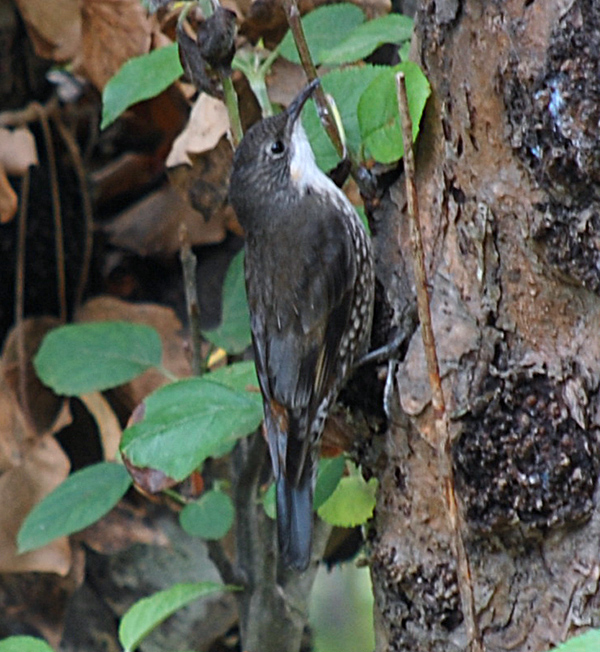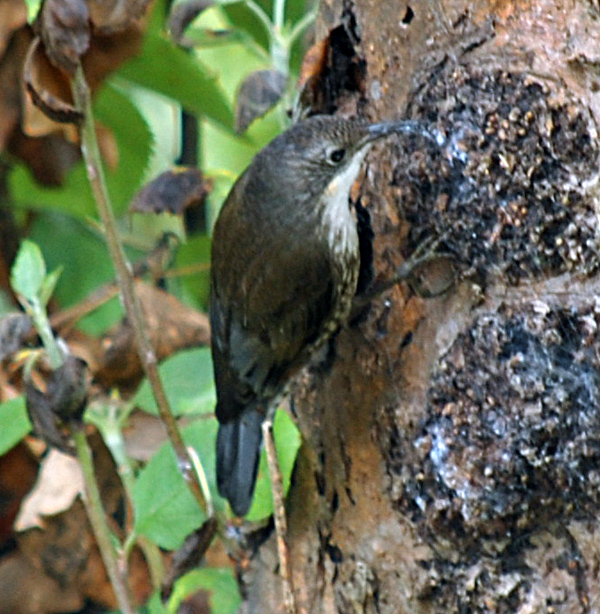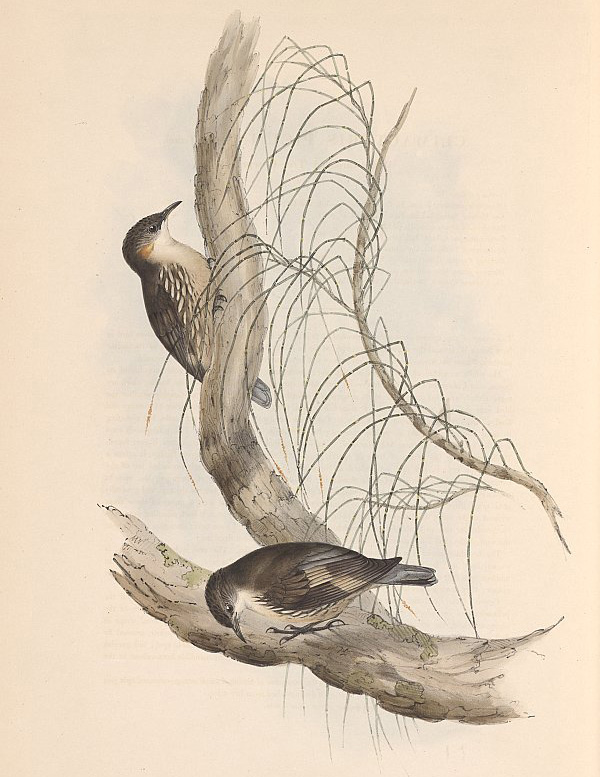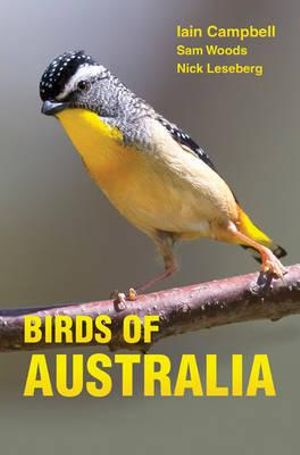White-throated Treecreeper
Cormobates leucophaeus
Family: Climacteridae (Australo-Papuan Treecreepers, 6 species in Australia).
Size: 13-15 cm
Distribution: Within about 1000 km of the coasts of NSW, Southern QLD, most of VIC small parts of southeast SA
Status: Common
Habitat: Rainforests, sclerophyll forests, woodlands
References: Simpson and Day, Reader's Digest
If you have ever seen a White-throated Treecreeper you will know instantly why it is called a "treecreeper". It literally creeps up tree trunks, looking for insects and grubs to eat. When it nears the top of the tree it flies down and starts again from near the bottom of the same or another tree. It is often seen in the Blue Mountains in native bush and in domestic gardens that are close to native bush. It has a call that sounds a little like the most common call of the Eastern Spinebill, except lower in pitch, more time between the "pips", and each pip has a slight change of pitch in it — unlike the Eastern Spinebill who's "pips" stay on the same pitch.

Photo: Blaxland, Blue Mountains NSW

Photo: Blaxland, Blue Mountains NSW

Artwork: John Gould, 'The Birds of Australia', 1848. Original Scanned Image.
Some Birdwatching Resources
|
 NEW: Birds of Australia: A Photographic Guide, by Iain Campbell, Sam Woods, Nick Leseberg, Geoff Jones (Photographer).
NEW: Birds of Australia: A Photographic Guide, by Iain Campbell, Sam Woods, Nick Leseberg, Geoff Jones (Photographer). I bought this field guide recently (June 2020). As the name suggests, it's got photographs rather than line drawings. They are very high quality, clear photos. I've got so many field guides now, they have to be really good before I buy them (I got it from a physical book shop, so I was able to look through it thoroughly before deciding whether or not to get it).
From the publisher:
Australia is home to a spectacular diversity of birdlife, from parrots and penguins to emus and vibrant passerines. Birds of Australia covers all 714 species of resident birds and regularly occurring migrants and features more than 1,100 stunning color photographs, including many photos of subspecies and plumage variations never before seen in a field guide. Detailed facing-page species accounts describe key identification features such as size, plumage, distribution, behavior, and voice. This one-of-a-kind guide also provides extensive habitat descriptions with a large number of accompanying photos. The text relies on the very latest IOC taxonomy and the distribution maps incorporate the most current mapping data, making this the most up-to-date guide to Australian birds.
- Covers all 714 species of resident birds and regularly occurring migrants
-
Features more than 1,100 stunning color photos
-
Includes facing-page species accounts, habitat descriptions, and distribution maps
-
The ideal photographic guide for beginners and seasoned birders alike
NOTE: This is the only field guide for Australian birds that I've seen which lists the size of each bird in both centimetres and inches. So if you're much more familiar with inches than centimetres, this would be the best Australian bird field guide to get just for that reason.
Purchase from Australia (The Nile)
Purchase from Australia (Fishpond)
Purchase from Amazon.com (USA Site)
Purchase from Amazon.com.au (Australian Site)
| See AlsoAustralian Bird Field Guides
Return to Australian Birds
Return to Site Map
Share This Page
australia birds guide
Content is copyright © Survive.au 2005-2025 All Rights Reserved. Terms of Use. Definitely read the disclaimer before trying anything from this website, especially including the practices and skills. This website uses affiliate links – this doesn't cost you any more, but I get a commission on purchases made through the website. As an Amazon Associate I earn similarly from qualifying purchases.
|





